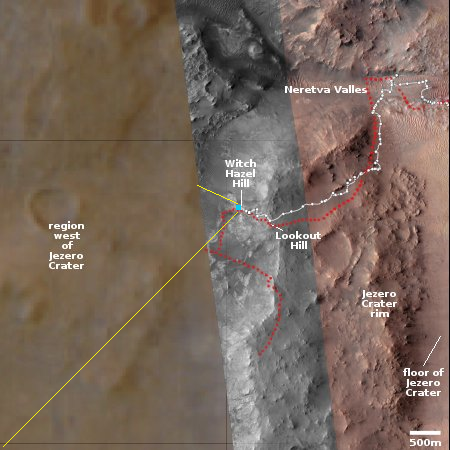Lunar Reconnaissance Orbiter snaps picture of Blue Ghost on the Moon

Click for full image. For original of inset go here.
Shortly after Firefly’s Blue Ghost lunar lander touched down within Mare Crisium on the Moon, the science team for Lunar Reconnaissance Orbiter (LRO) used it to capture a picture of lander on the surface of the Moon.
That image is to the right, reduced to post here. The inset was expanded and sharpened to bring out the details, with the arrow showing Blue Ghost, that tiny dot in the center with a shadow to the right.
The Firefly Blue Ghost lunar lander set down on 2nd March 2025. The landing site (arrow) is about 4000 meters from the center of Mons Latreille, a large volcanic cone [seen to the left].
…LRO was 175 kilometers east (19.294°N, 67.956°E) of the landing site when the NACs acquired this dramatic view of the landing site on 02 March 2025 at 17:49 UTC.
Blue Ghost landed shortly after lunar sunrise, and is designed to operate for one full lunar day (fourteen Earth days). Whether it can survive the 14-day-long lunar night won’t be known until the next sunrise.

Click for full image. For original of inset go here.
Shortly after Firefly’s Blue Ghost lunar lander touched down within Mare Crisium on the Moon, the science team for Lunar Reconnaissance Orbiter (LRO) used it to capture a picture of lander on the surface of the Moon.
That image is to the right, reduced to post here. The inset was expanded and sharpened to bring out the details, with the arrow showing Blue Ghost, that tiny dot in the center with a shadow to the right.
The Firefly Blue Ghost lunar lander set down on 2nd March 2025. The landing site (arrow) is about 4000 meters from the center of Mons Latreille, a large volcanic cone [seen to the left].
…LRO was 175 kilometers east (19.294°N, 67.956°E) of the landing site when the NACs acquired this dramatic view of the landing site on 02 March 2025 at 17:49 UTC.
Blue Ghost landed shortly after lunar sunrise, and is designed to operate for one full lunar day (fourteen Earth days). Whether it can survive the 14-day-long lunar night won’t be known until the next sunrise.











